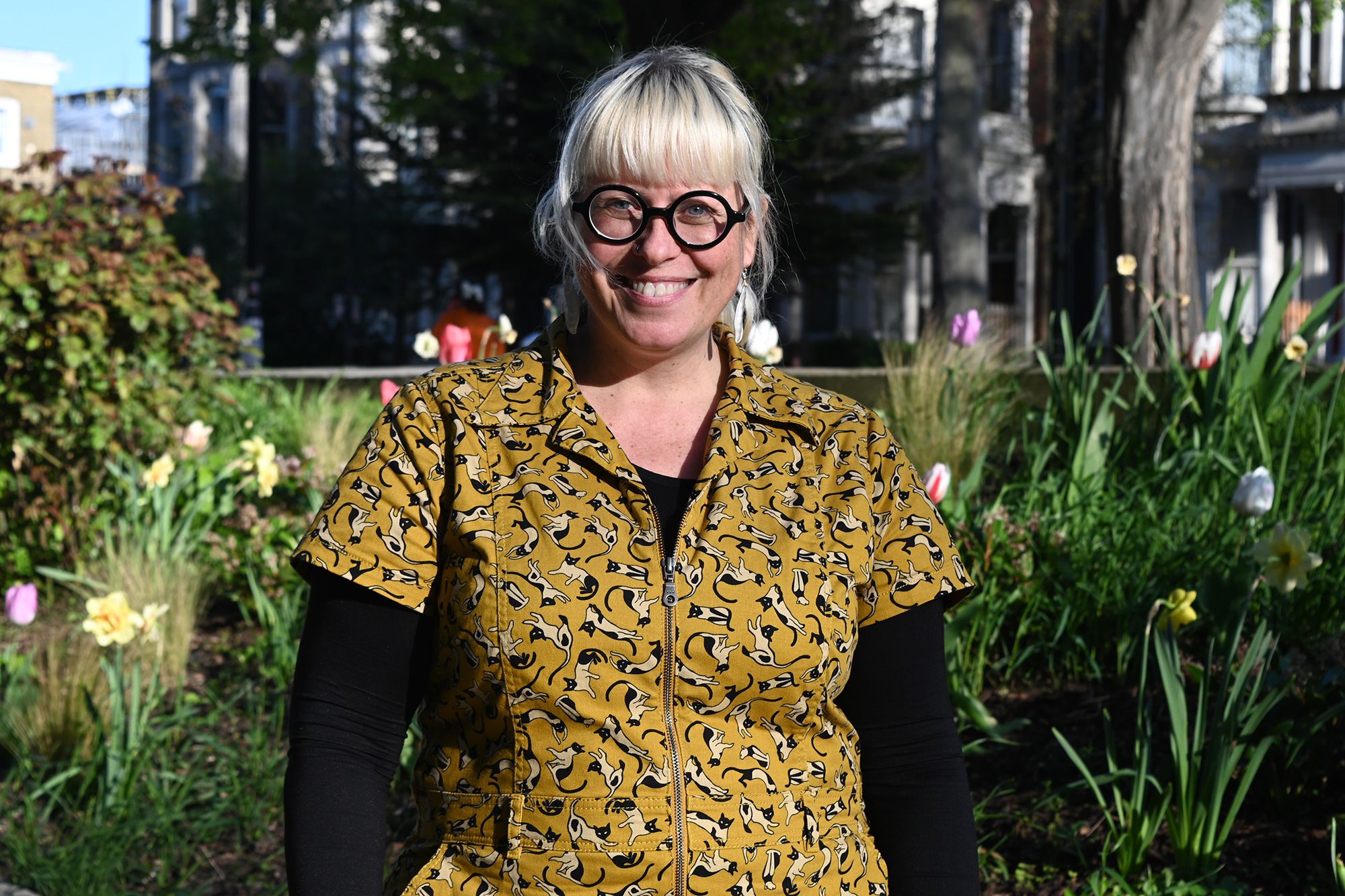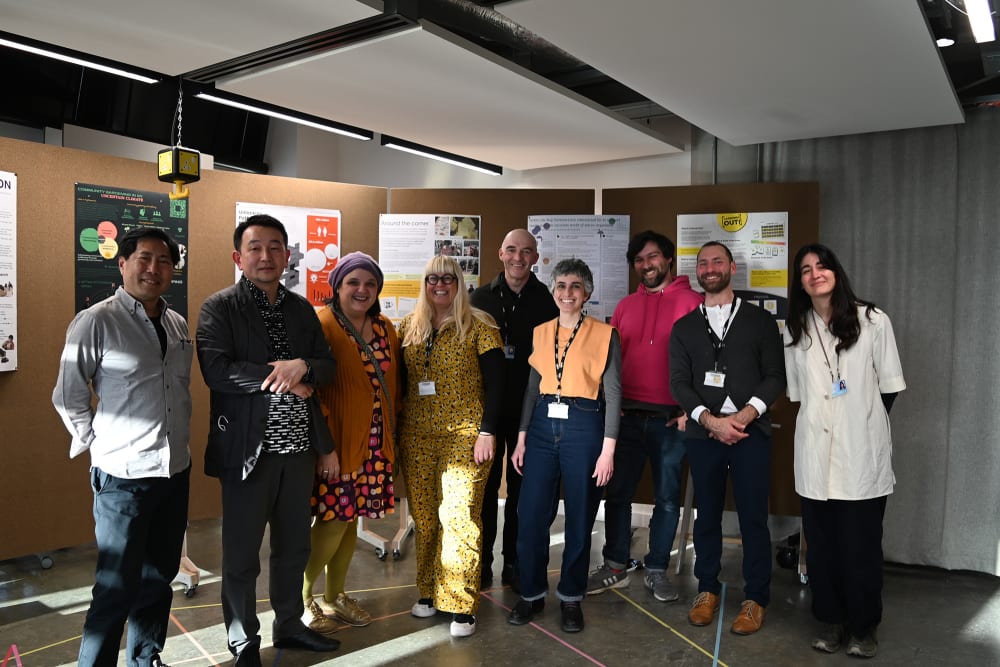
An Interview with Niki Wallace, Course Leader for MA Global Collaborative Design Practice

- Written byEuan McLaren
- Published date 20 September 2023

From musician to designer to Course Leader for MA Global Collaborative Design Practice at Camberwell College of Arts, Niki Wallace’s career path has been far from conventional.
Hailing from Southern Australia, Niki was appointed Course Leader in 2021. Advocating for collaborative approaches to design that focus on cooperation over competition, Niki founded Net Zero Lab in 2019.
Niki’s vast experience across a multitude of professional fields has nurtured a deep passion for collaboration, which Niki has endeavoured to instil within the course. With the first cohort of MA Global Collaborative Design Practice students graduating in 2023, the course runs in partnership with Kyoto Institute of Technology (KIT), in Japan.
We caught up with Niki about the course, her entry into design, and her involvement in Net Zero Lab.
Tell us a bit about yourself and how you became interested in design.
I’m Niki Wallace and I’m the Course Leader for MA Global Collaborative Design Practice at Camberwell College of Arts. I’m a designer, educator and researcher mainly interested in co-design, regenerative cultures, circularity and relational principles as part of design’s role in sustainability transitions.
Funnily enough, I got into design through work as a musician. I used to design all of the posters, cassettes and CD artwork for different bands I was in. I didn't think I was talented enough to make it as an artist, so I ended up learning how to code which allowed me to move into web design upon graduating.
I was frustrated by web design and went back to study visual communication design, after exploring a few different specialisms, I started to think ‘how can I shape the practice that I can feel good about but still aligns with my values?’ This led me to start my own design studio, which I ran for about 15 years. During this time, I completed a PhD which focused on transitions and what it takes to make major societal shifts towards more sustainable ways of living. After my PhD I founded Net Zero Lab, along with 10 other people. Net Zero Lab is a living lab collective of designers and researchers who practice emergent approaches to co-design, regenerative futures, and transition design. We conduct research with the people that are experiencing the problems that we were looking to address and exploring what it means to co-create with communities of people. It’s quite an experimental space. The idea is that the lab works with real people in the real world and works in very transparent, open ways.
Why do you feel collaboration is an important practice in design?
I think collaboration is fundamental to how we move forward and address some of the global problems of our time. In a lot of research and work that I've done, people work in silos and there tends to be problems that exist in and across those silos. Collaboration increases the visibility, like putting windows in the sides, so people can better see and understand what’s going on.
On a more personal level, there's something nice about what happens when you have a group of people that work together. Working in these problem areas can be intense, so working collaboratively gives you a structure of support that becomes quite important in terms of how you're able to manage the emotional labour involved in this kind of work.

Can you tell us more about the MA Global Collaborative Design Practice course?
MA Global Collaborative Design Practice is a dual award 2-year Masters course from Camberwell College of Arts, part of University of the Arts London (UAL) and Kyoto Institute of Technology (KIT), in Japan. The course aims to build dialogues and projects between international communities and contexts, responding to social and environmental challenges. The students graduate with a Master of Arts from UAL and a Master of Engineering from KIT, which is a hugely impressive set of awards to take out into the industry.
How does the collaboration between UAL and KIT work in practice?
The partnership is unique in that it brings together 2 complementary approaches to design: an engineering approach and a creative approach. Students study with UAL and KIT simultaneously and student contact time is split between the two institutions.
In unit 1, we start by looking at the UN’s Sustainable Development Goals and we critically engage with them. We reimagine what they might be and start to think about what it might mean to intervene in some of those global problem spaces in very localised ways.
The students are asked to think about what they would do to intervene in a global problem area, like homelessness for example, and how they can intervene in that problem in London and reimagine that intervention for Kyoto, where there's a different cultural context and where the problem emerges differently.
In out next unit, we start to explore larger problems in greater detail. Instead of it just being a speculative proposition, we introduce a prototyping process where we collaboratively map the problem and think about how we can intervene in a very localised way.
Then in 2nd year we use those speculative and prototyping skills to realise a major design project that intervenes in a global challenge at a local level. From UAL, they learn about these sorts of approaches to design, and at the same time they're learning very practical and material design skills from KIT that consider the role of design in society.
As 2nd year concludes, the students create a positioning statement for themselves and start to make applications, submissions for funding, or look for an incubator or start up. We support them in their application process. The idea behind this is that our students’ final moments in the course are a little more gradual, it’s not such a blunt finish to the course. I’m proud that that's baked into the course because I think it's needed.

Can you tell us more about the exchange that takes place between London and Kyoto?
The 2 cohorts start year 1 in their London and Kyoto studios. Then partway through first year, the KIT students join us in the London studio to study at UAL. After a few months, the students all travel to the Kyoto studio, and they spend a few months all studying together at KIT. After the summer, the students all return to their ‘home-base’ studios for 2nd year. So in first year there's this wonderful opportunity to immerse in the 2 different cultures that informs how they interpret their work and can also inform how they approach their major design project in 2nd year.

Can you tell us about some of the projects students have worked on?
The 2023 1st year cohort focussed on hyper separation: the idea that we are, as humans, incredibly separated from nature, separated from power, separated from decision making. The students branched off into different sections of that problem area. We had 1 group of students that were looking at how we're separated from production and how we consume without knowing how to make. There's another group that were looking at how separated we are from waste and food production, another group looked at how separated we are from nature, and others explored how separated people are from the policies that govern movement and migration.
Our graduating cohort had projects spanning a variety of topics, including shared energy usage, climate literacy, climate migration, public space design, furniture waste, reducing sleep deprivation and minimising mindless scrolling on devices.
What type of person might apply to this course?
We're looking for people who have a capacity to engage with complexity, who are open and flexible, willing to communicate and collaborate, willing to be experimental, and happy to fail as part of their exploration! In terms of disciplinary background, there is no fixed discipline. The course is multi-disciplinary and our past cohorts have included people from different design disciplines as well as linguistics, journalism, psychology, and economics. It enriches the conversations that we have.
There's potential for students to really sell this bonus skill set of being able to work as systems practitioners with a design edge.